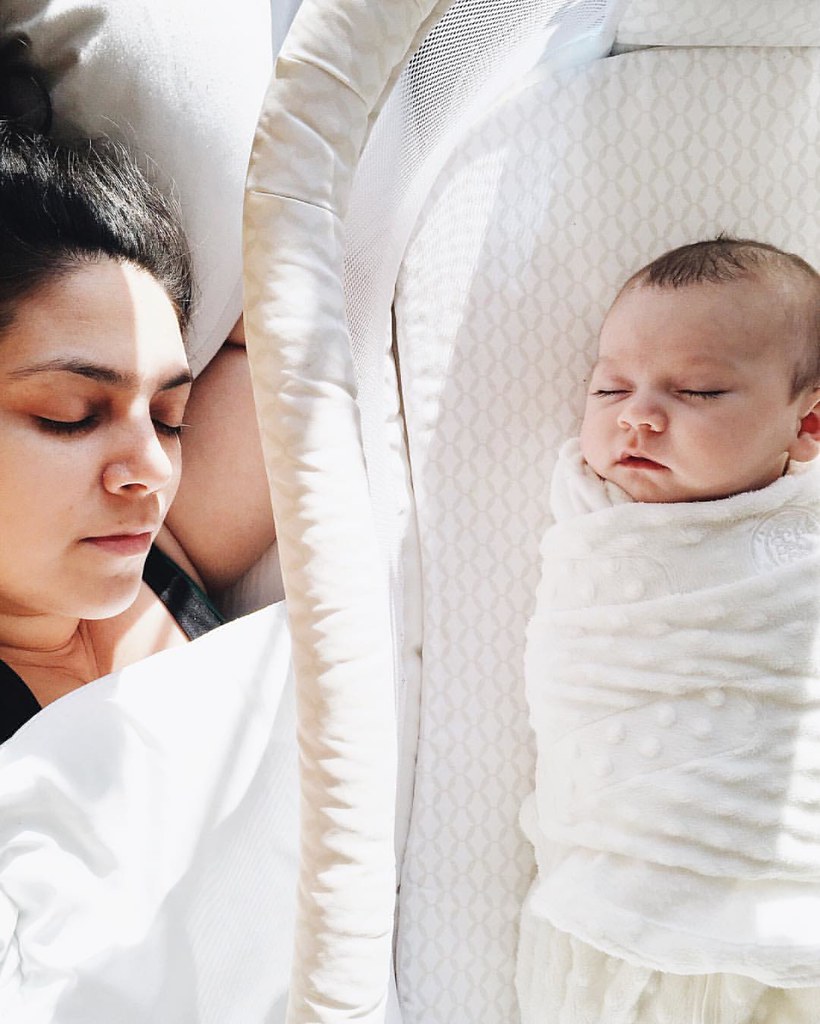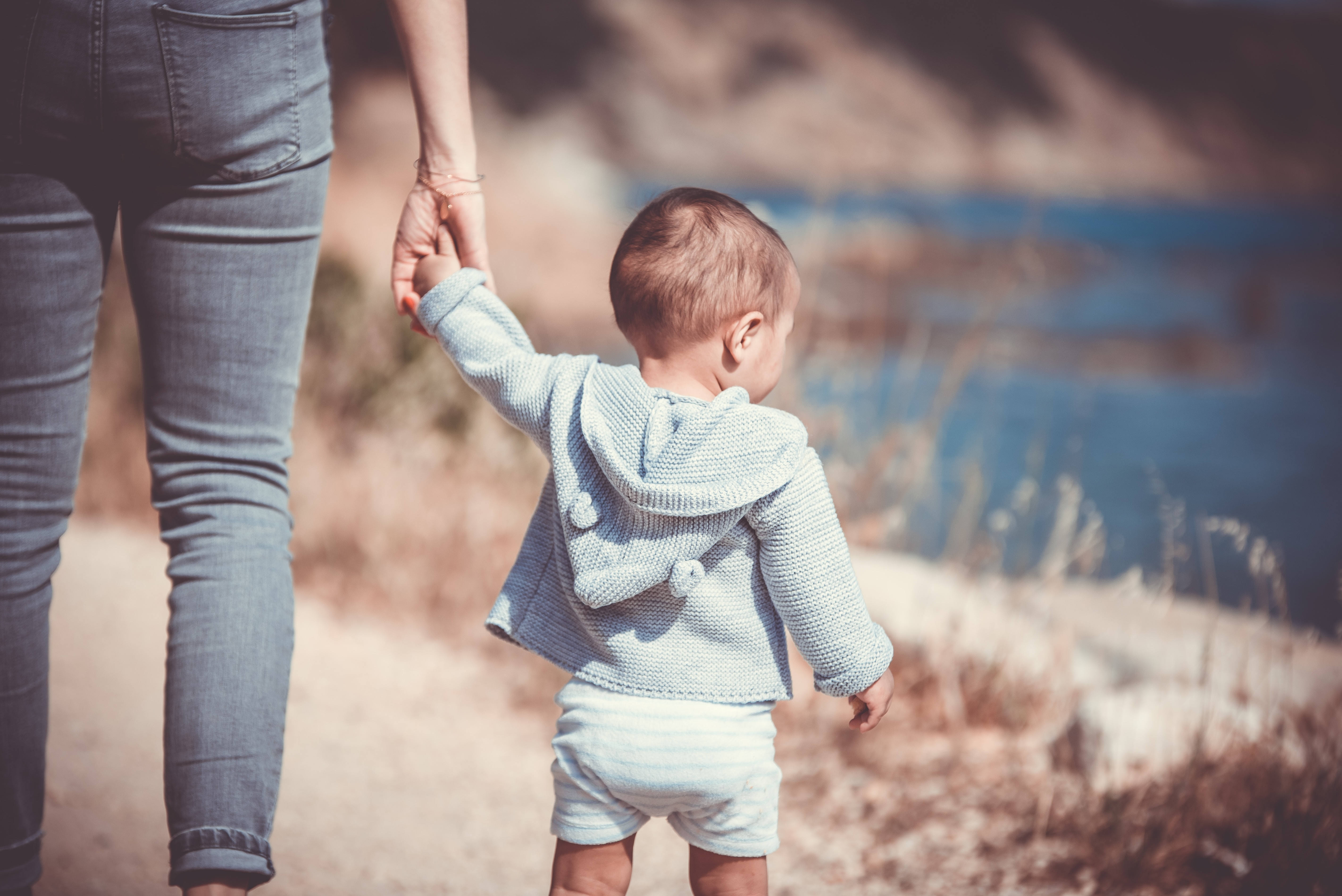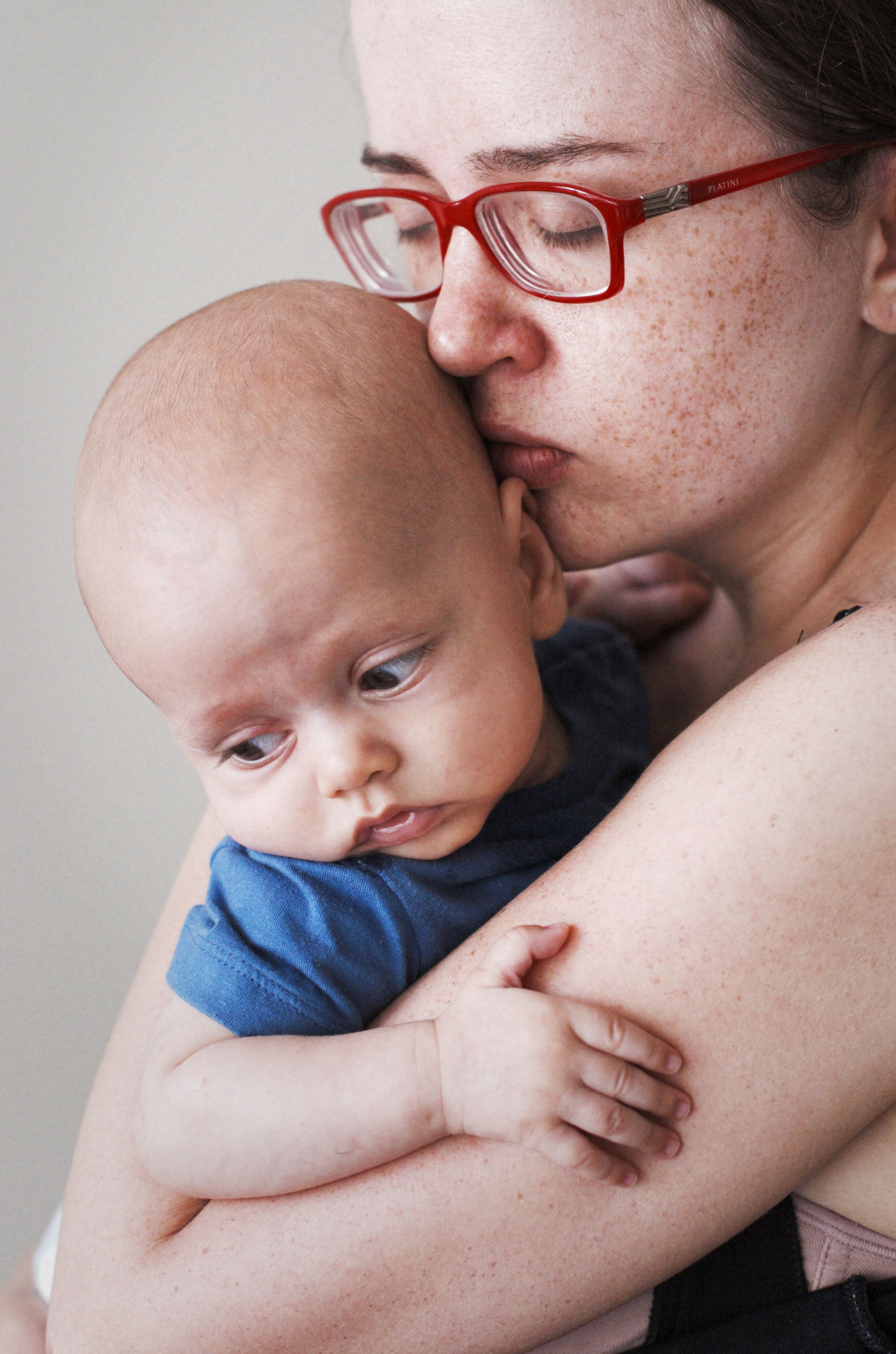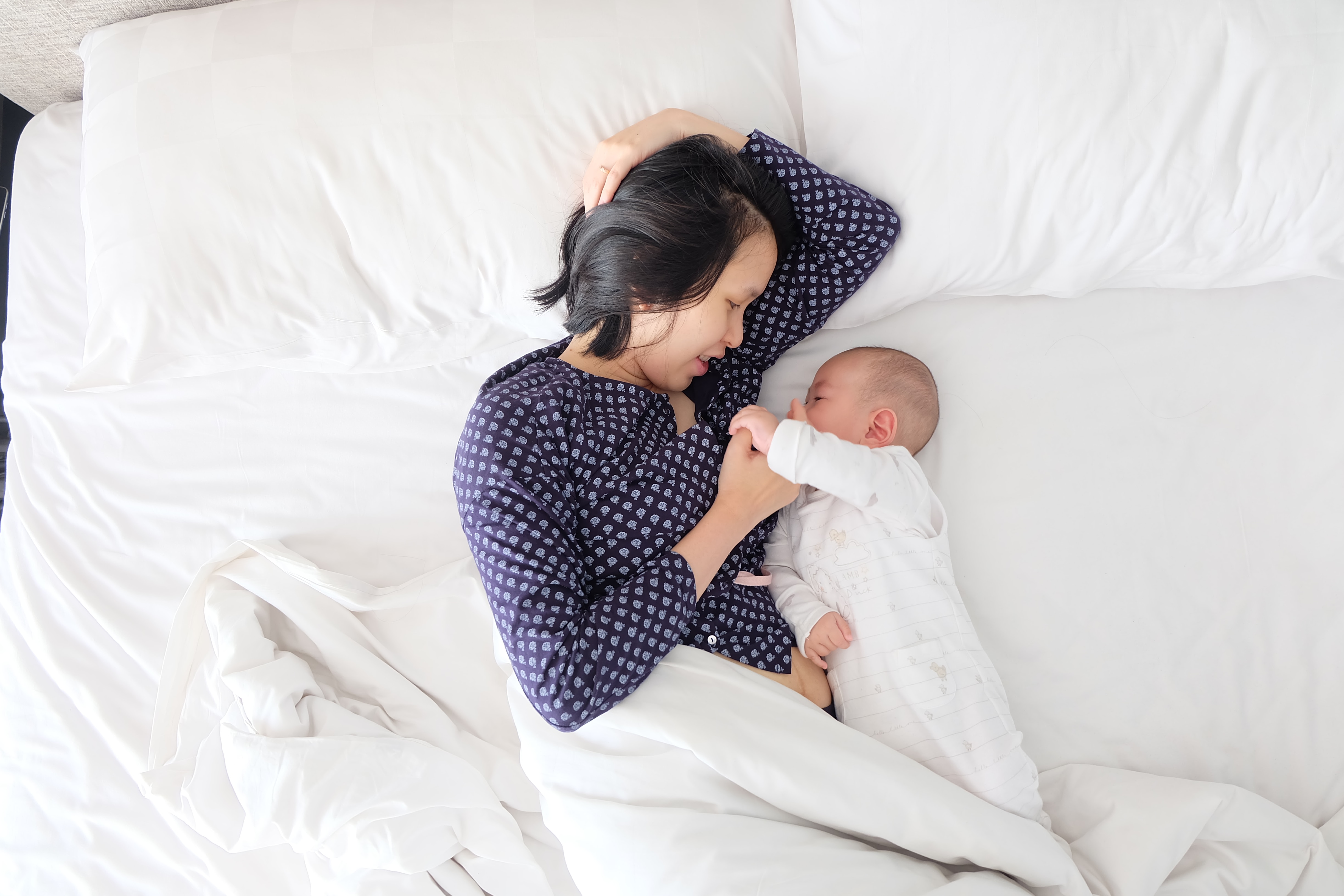Talking to your friends, family, or healthcare providers about cosleeping with your child is never easy. The practice is culturally stigmatized, with many negative myths surrounding the topic of bedsharing that are not, for the most part, backed up by the available research or science.
For most of history, parents and babies slept together. It is only in recent decades in the Western industrialized world that we ask “Is it safe to sleep with baby?” rather than “Is it safe to NOT sleep with baby?” Given the biology of human infants, the latter question may be more appropriate. However, in modern society, cosleeping families are met with questions, concerns, and many misconceptions.
The best thing that you can do to combat these assumptions is educate yourself and others. Doing research to find information backed up by scientific evidence is the best way to make an informed decision for you and your family. To help put your mind at ease, here are some of the most common misconceptions explained and dispelled.
1. “Cosleeping means sharing a bed with your baby.”

When discussing cosleeping, most people are talking about bringing your baby or toddler into bed with you, but this is not necessarily the case! There are many ways to cosleep that vary by culture and individual preference. For example, you might choose to cosleep by having your baby in a bassinet beside your bed, or in a cosleeping device that sits on top of the bed. You might cosleep every night, or only on nights when your child is extra fussy. Bedsharing is just one version of cosleeping that is particularly convenient for breastfeeding mothers.
No matter where your baby is sleeping, (but especially if you’re bedsharing) it is critical to read up on safety guidelines (https://cosleeping.nd.edu/safe-co-sleeping-guidelines/). Remember, the important requirement for cosleeping (whether same-surface or separate-surface) is that mother and infant are close enough during sleep to detect and respond to each others sensory signals. These cues include sounds, touches, movements, odors (like that of breastmilk), visual signals, breathing sounds, and the rush of mom’s breath hitting and exciting her infant’s cheek cells. Research suggests that something as simple as the carbon dioxide gas exhaled by the mother can signal the infant’s body to exhale and begin a new breathing cycle.
2. “Cosleeping makes your child more dependent on you.”

Parents are under the impression that if they don’t train their children to sleep through the night on their own, they may end up with limited developmental or social skills, or bad sleep habits as adults. Some believe that when children become used to their parents’ presence during sleep, it might stunt their independence. This is false.
A child’s ability to be independent and self-sufficient later in life has absolutely nothing to do with the age at which they can put themselves back to sleep without a parent or a loved one. Studies by psychologists Meret Keller and Wendy Goldberg actually have shown that cosleeping toddlers are more independent socially and psychologically than those that don’t bedshare. Cosleeping toddlers are also more comfortable being alone than solitary sleepers. In general, children who cosleep tend to make friends easily, are more innovative, are better able to control their tempers, and are better at problem solving while alone.
I tend to think that sleep location doesn’t really change the types of psychological characteristics that an infant or child develops; rather, it strengthens (and provides more of) these skills by providing a 24/7 positive relational experience, particularly at night when children require more reassurance.
That said, it is likely that cosleeping will slow down your baby’s willingness to sleep alone. Most routines are hard to break, especially if they are enjoyable—so be prepared. However, transitioning to solitary sleep will indeed happen, with no future social or cognitive skills being lost but rather with some of those skills being strengthened and reinforced.
3. “Cosleeping with your child will hurt your relationship with your partner.”

It’s obviously true that new-parent relationships change while caring for an infant, but that doesn’t mean that sleeping with your baby in your room will have a negative effect. With the baby in bed with you, or otherwise cosleeping, you can still laugh, talk, touch, and enjoy your connection with your partner. Such a question depends on who is cosleeping and what each partner feels about their arrangement.
Above all, it is important that you and your partner strive for the same goals for raising your child, working as a team through challenges and experiences. The best way to prevent strain on your relationship is for both partners to research and discuss sleeping arrangements with each other, and to be honest about what form of cosleeping each person feels comfortable practicing. And, of course, both partners should commit to following recommended safety precautions.
Each family is unique, with complexities that differentiate them from others. Intimacy may have to be less spontaneous when cosleeping, but it doesn’t have to be completely eliminated. In fact, it can make for a more special bond when you do share those precious moments with your partner.
4. “Cosleeping creates bad habits.”
Cosleeping does not create bad habits, considering that one family’s bad habit can be another’s greatest joy. As a father of a bedsharing infant and toddler, I considered it a privilege and cherished the time that I spent with him. Cosleeping at night might be the only time that a family can come together and truly connect.
If you routinely cosleep all night, you will have great memories from the experience, and your child may develop more capacity for self-sufficiency, resilience, and comfort with affection.
However, you may also experience less consolidated sleep. Some see this as the “bad habit,” but I see it as quality time with your family, and less time out of bed soothing children in separate rooms. In my opinion, and the opinion of many happily cosleeping families, the benefits outweigh the costs.
5. “You won’t get a good night’s sleep.”

A “good night’s sleep” varies from person to person, but research has shown that bedsharing can be the solution to getting more sleep, rather than being the cause of less sleep. Generally, cosleeping parents wake up more often during the night, especially breastfeeding mothers practicing what I call “breastsleeping”(see McKenna and Gettler, Acta Pediatric, 2016), but cosleeping parents can also fall back asleep much faster than parents who have to get out of bed to check on their infant. Bedsharing mother-infant pairs in particular have many brief, transient arousals, and the infants tend to breastfeed much more frequently without much disruption of sleep. These little arousals induced by a cosleeping adult can actually be protective for young infants by giving them practice, for example, in waking to breathe. This may help make the infant’s reactions to apneas or breathing pauses a bit more efficient.
By cosleeping with your infant, you can take care of their needs, like breastfeeding, faster, while remaining in bed or barely getting up. Frequently, when an infant sleeping in a separate room is picked up for a feeding session, the parent will have a hard time putting them back down in their crib, which ultimately means the parent loses more sleep. It takes a longer period of time to go to another room, feed, and then comfort an infant before laying them in their crib, and likely picking them back up again when they become upset that you’re leaving!
While cosleeping is a complex subject that requires at least some research, adjustment, and modifications to nighttime routines, it ultimately pays off (should parents welcome it) with great memories, bonding time, and benefits for millions of families. Don’t let historically based cultural myths and other people’s negative assumptions and simplistic generalizations take away from what can be one of humankind’s most satisfying and important practices for infant and parent alike.

Dr. James McKenna is the nation’s leading infant sleep researcher. His forthcoming book Safe Infant Sleep: Expert Answers to Your Cosleeping Questions will share his most recent research on the topic, counter common misconceptions with hard science, and help parents identify and avoid the hazards of any sleeping arrangement. Find it online and on shelves in January 2020.


